Idaho Lawn Care for Beginners: The 8 Most Important Things to Know
It’s kind of embarrassing being a lawn care beginner.
There you are, standing out on your lawn with your brand new mower, lawn sprayer, and a bag of fertilizer trying to look like you know what you’re doing.
But your confused look gives you away. Also, that’s a paint sprayer, not a lawn sprayer.
Let’s get you on the right track. Check out these tips on how to take care of a lawn for beginners:
1. Fertilizer is Food — Don’t Skip a Meal
You know how you get when you skip a meal. Don’t let your lawn get hangry.
Even experienced lawn owners often neglect their lawn’s fertilizer needs, only applying it once or twice a year, or forgetting completely. Life gets busy.
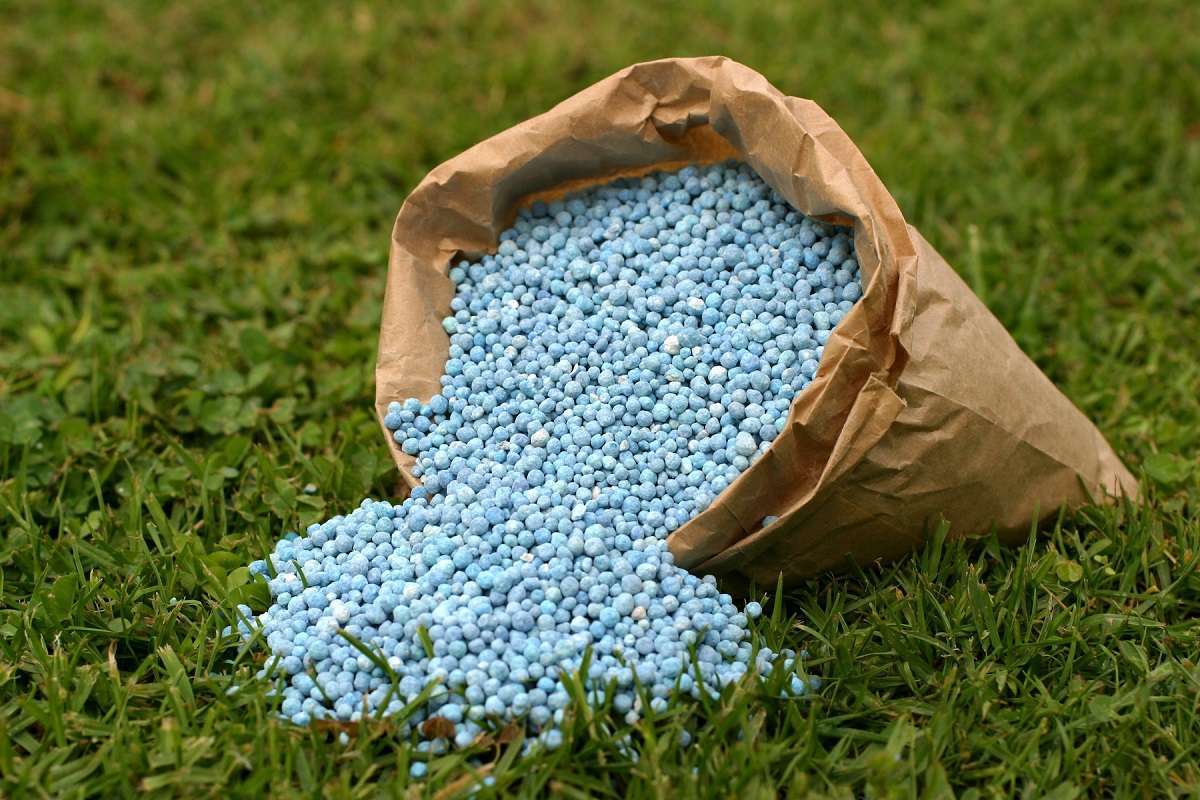
Idaho lawn care means having a fertilizer plan. Here’s a handy schedule:
- Mid-to late-April, once the soil temperature reaches 55 degrees.
- Three times during the summer growing season: mid-May, around the end of June, and in early to mid-August.
- Fall. (Don’t skip it. The final fertilizer treatment in fall includes important slow-release granular fertilizer that feeds your hungry lawn for the winter and helps it pop back up, ready to impress, in the spring.)
One more big lawn care tip for beginners: choose quality fertilizer. Buy it at a local garden center or fertilizer supplier rather than a big box store. Or even better, hire a lawn care service with superior products.
2. Lawn Care for Beginners: Zap Those Weeds
Beginner lesson number one — the difference between pre-emergent and post-emergent weed control.

Unlike other weed control products that kill weeds that have already sprouted, pre-emergent herbicides work ahead of time, preventing seeds of unwanted plants from sprouting in the first place. They target the weed seeds before they have a chance to germinate.
Timing is everything. It’s important to apply the pre-emergent herbicides early enough because if you wait too late, they won’t be effective. Idaho lawn care includes applying pre-emergent around April 1.
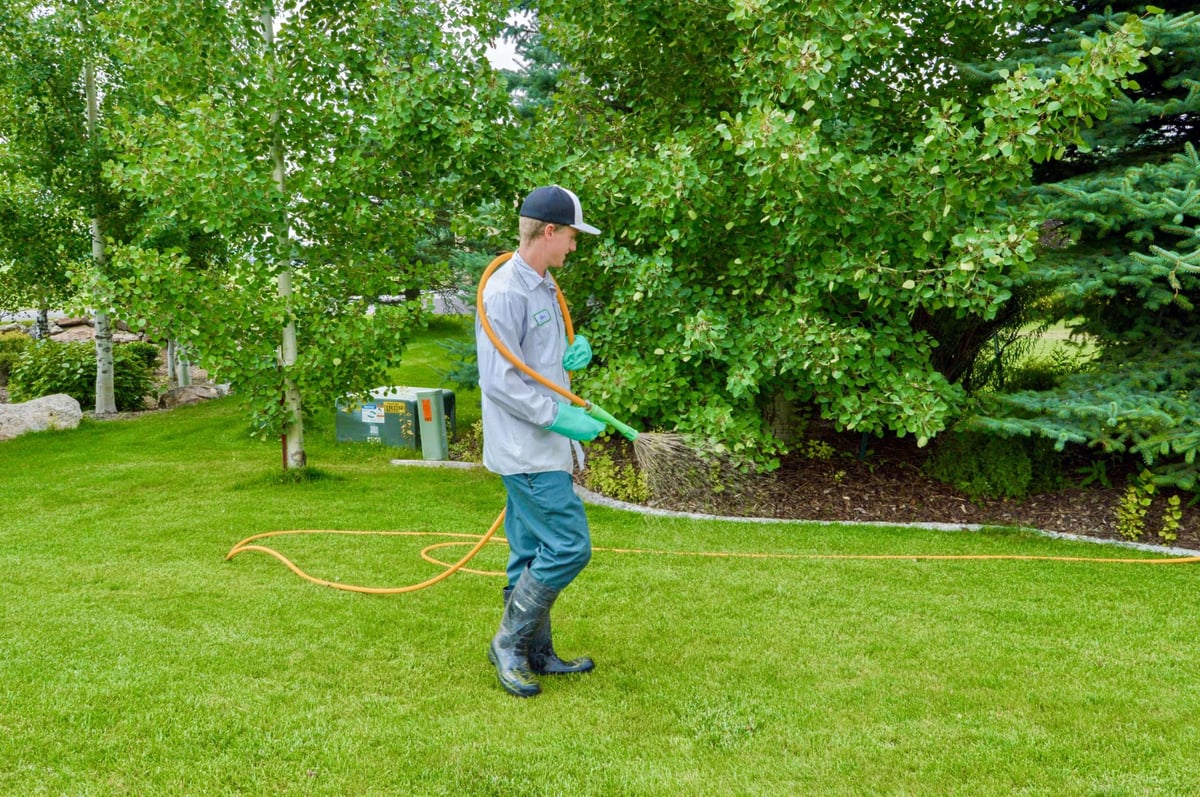
But weeds being weeds, some sneaky invaders still show up. Once weeds have broken ground, you can use post-emergent herbicides to control them.
Lawn care for beginners tip: Kick pesky weeds to the curb with professional weed control that includes pre-emergent weed treatment in the spring, to battle weeds before they sprout; broadleaf applications to hit dandelions and clover; and spot treatments when pesky intruders sneak in.
Meanwhile, weeds hate a thick, healthy lawn. Dense grass crowds out weeds and blocks the sunlight their seeds need to sprout. Weeds love to push through struggling lawns to take over weak spots.
So beat weeds by keeping your grass thick, lush, and healthy with a lawn care service annual maintenance program for healthy, strong roots.
3. Lawn Care for Beginners: Water Wisely
There’s more to watering your lawn than dousing it with water.
Be strategic about watering, so your grass gets the water it needs, but not too much.
Early morning is the best time — it’s still cool, so all that valuable water won’t evaporate in the hot sun.
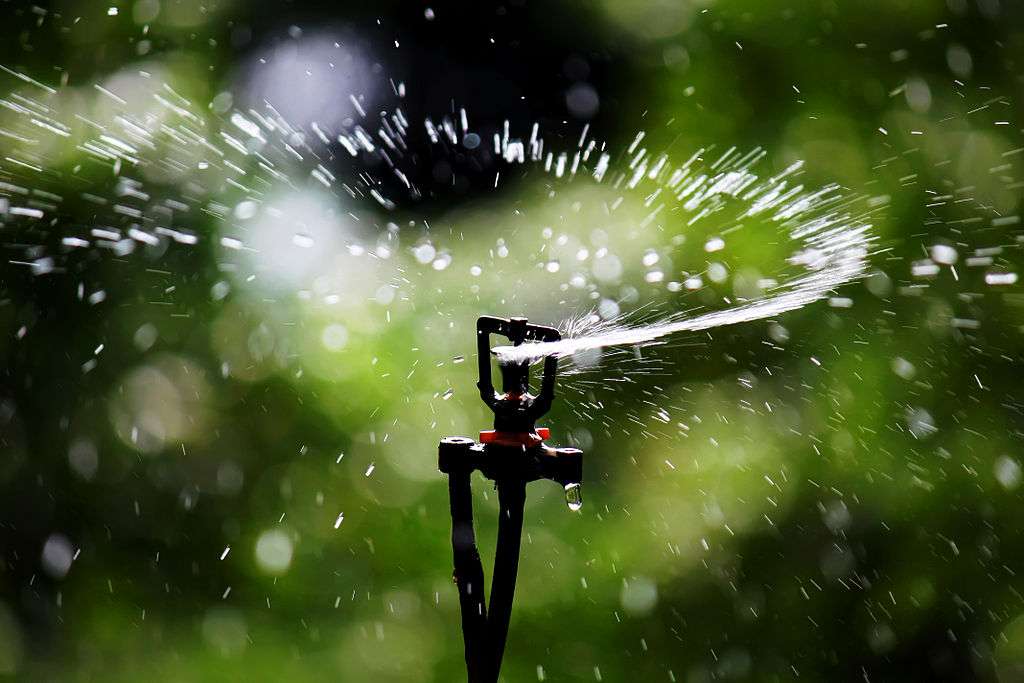
Lawn care for beginners bonus tip: Don’t think your grass needs watering every day. It doesn’t. Water too often, and it encourages shallow, needy roots.
Water less often but deeply, and roots will grow deeper and healthier.
4. Mow Tall for the Best Idaho Lawn Care
Common lawn care for beginners mistake? Mowing your grass too short, assuming it's a big time saver.
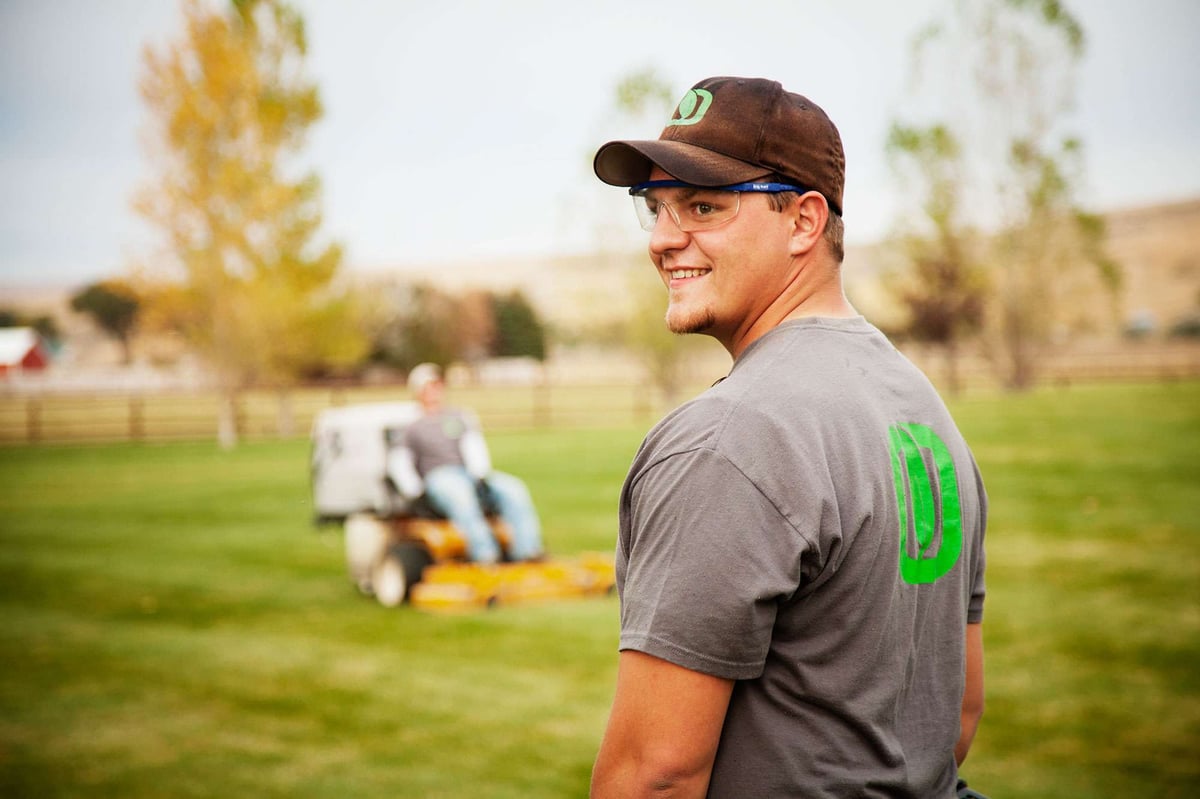
But cutting your grass too short stresses the grass, and makes it more susceptible to damage from insects and disease. Never cut off more than a third of the grass blade at any one time.
That way, the grass will develop a deeper root system to support the longer blades and need less water. That leads to a fuller, greener lawn.
5. All About Aeration
Any “How to take care of a lawn for beginners” handbook has a chapter on aeration.
It’s an Idaho lawn care staple.
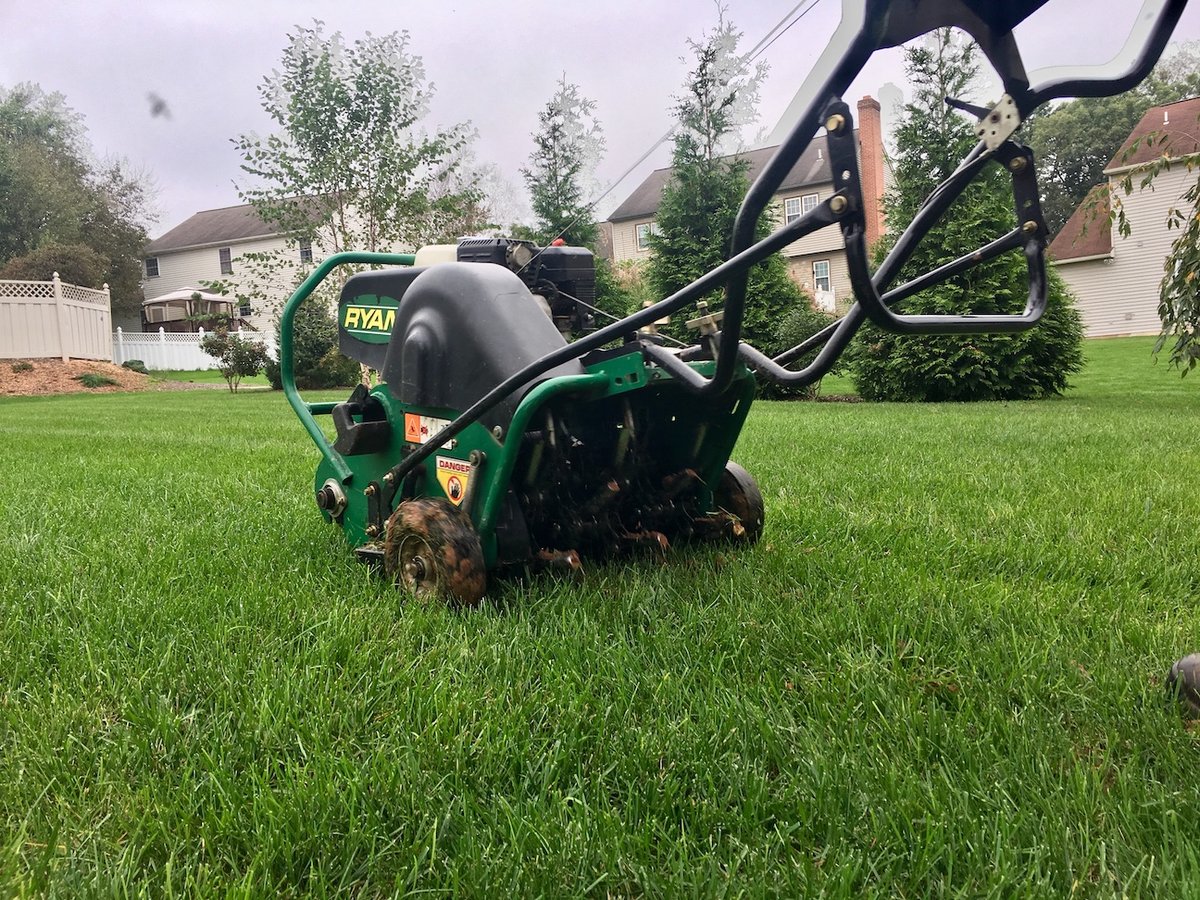
When your soil becomes compacted, your lawn can't breathe. Its roots can't take in water or nutrients, which weakens your turf and opens the door for disease and weeds.
Aeration uses a machine to pull out tiny cores of soil from your lawn, allowing water and oxygen to get to the roots.
Then, time for seed…
6. Lawn Care for Beginners: Choose the Best Grass Seed
All those little holes created by aeration are perfect cozy homes for new grass seed to revitalize your lawn.
Choose the best grass seed for Idaho lawn care — a mix of of 80 percent Kentucky bluegrass and 20 percent perennial ryegrass.
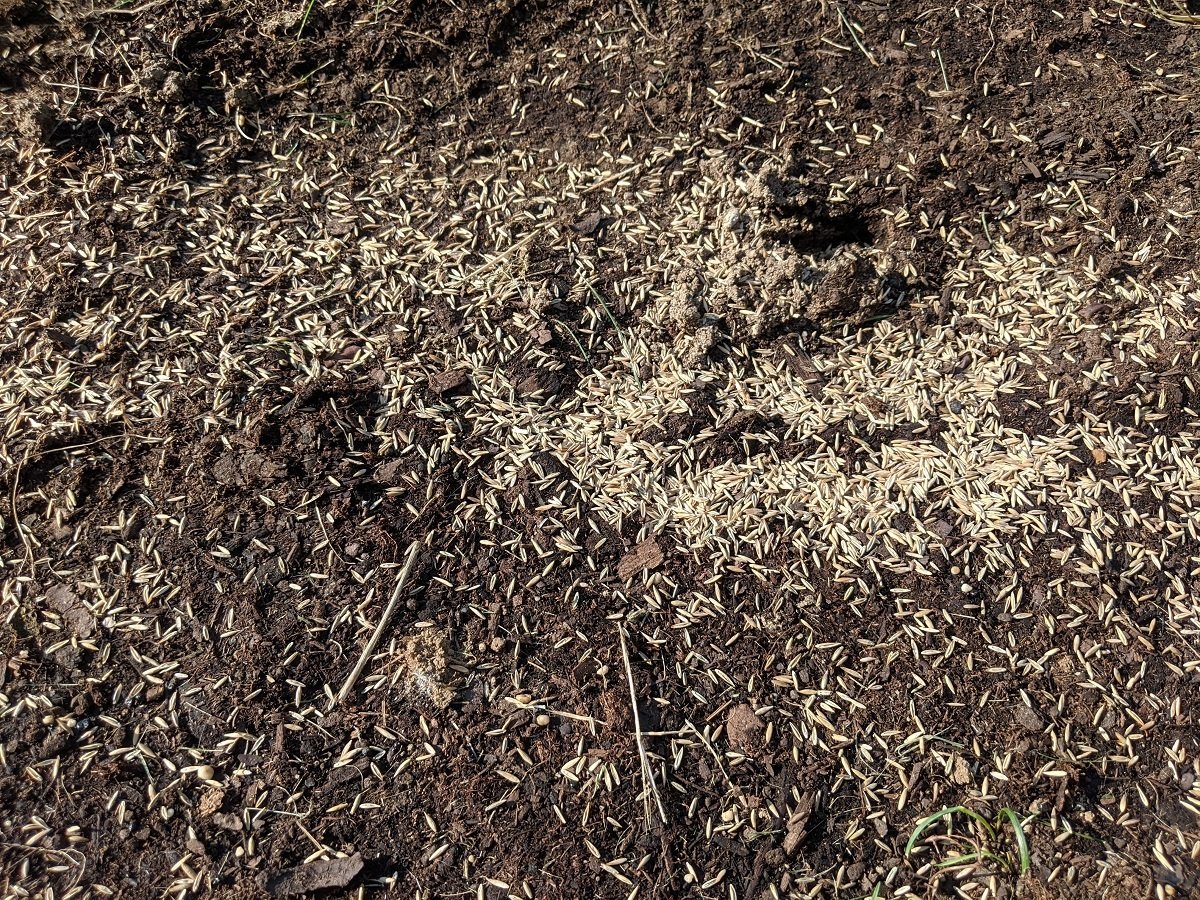
Unlike a single-variety grass seed, blends give you the benefits of more than one variety or species.
Blends are also more likely to withstand diseases than single-species lawns, because of their genetic diversity.
7. Get a Lawn Soil pH Test
Remember how fertilizer was our number one lawn care for beginners tip? Well, you can use all the fertilizer you want, but if your lawn’s pH level is off, it won’t do any good.
Soil pH is a way to measure the amount of acidity or alkalinity in your lawn’s soil.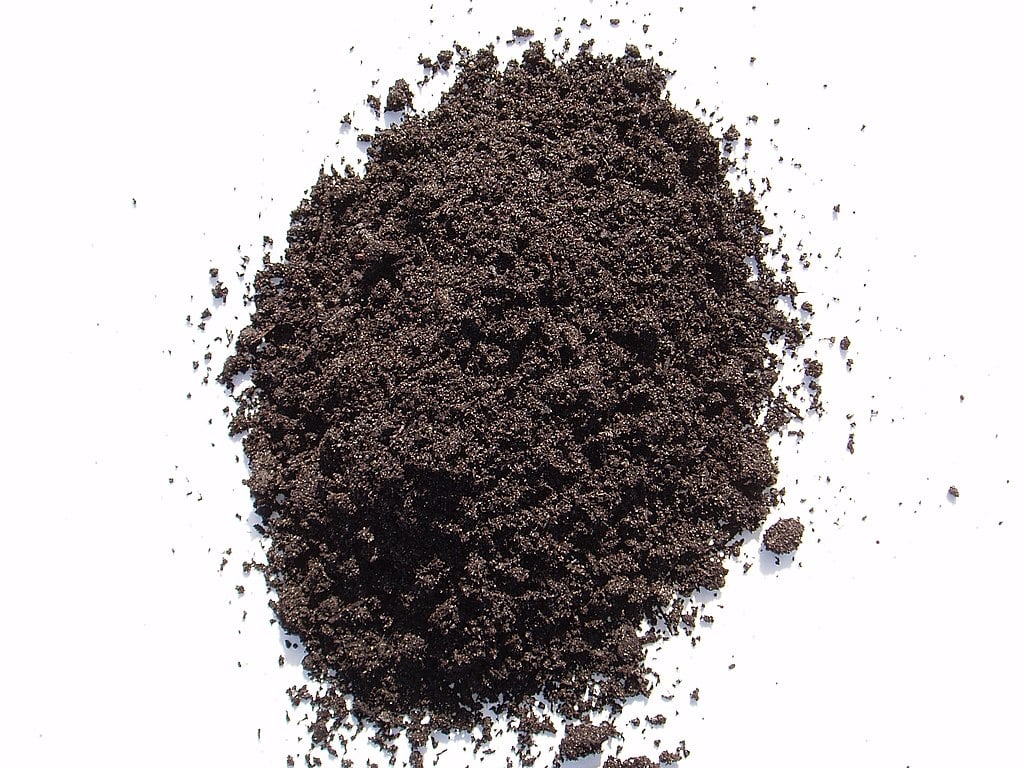
If your lawn soil pH is too low, it’s time for lime, a soil amendment made from ground limestone rock, which contains calcium carbonate and magnesium carbonate.
Or, if your lawn soil pH is too high, your lawn might need gypsum, a mineral that contains hydrated calcium sulfate.
Both work to balance the pH level of your lawn. Once your lawn is balanced with the right pH, your soil can actually use the nutrients in your fertilizer, and flourish.
A simple soil pH test will tell you if your lawn’s soil needs a boost.
8. Meet the Grubs (Sorry)
We hate to do this to an innocent beginner, but it’s important to know about grubs.
Ignore them, and they can destroy your lawn — fast. Grub prevention is a key part of Idaho lawn care.
Grubs are the larvae of Japanese beetles, June beetles, chafers, and other beetles.
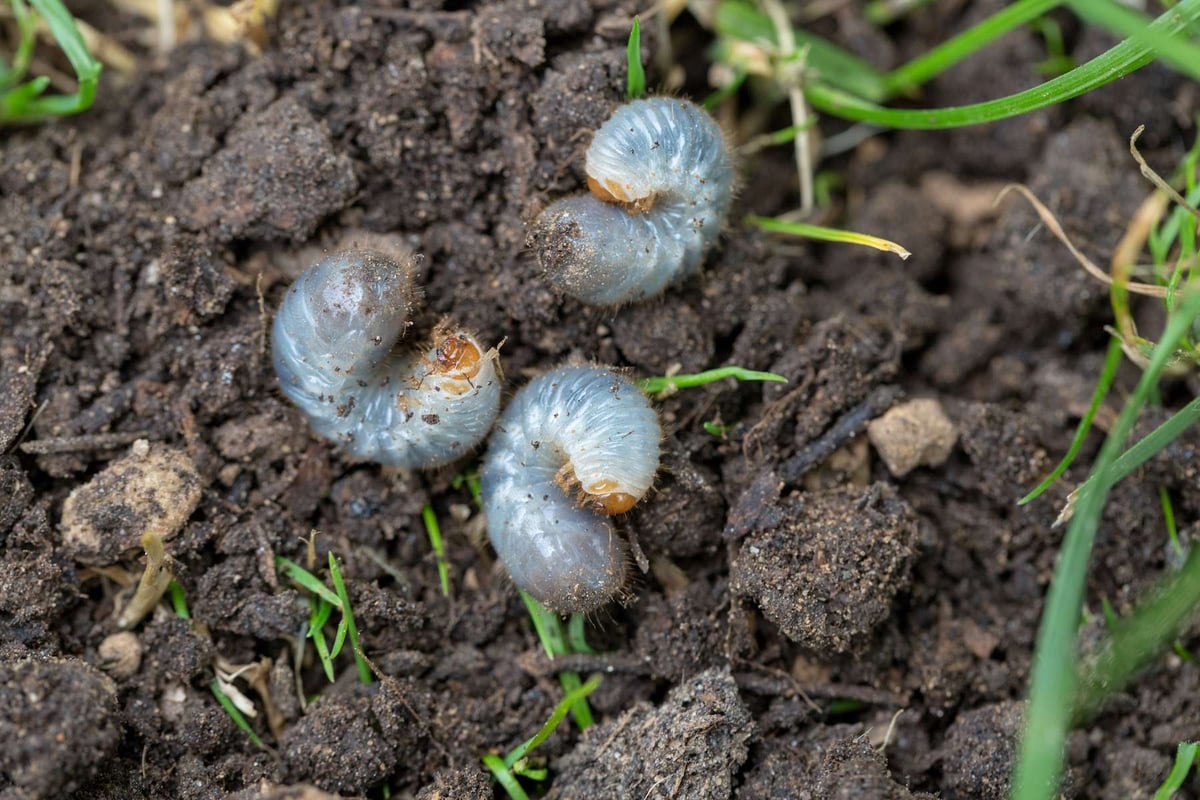
These white, C-shaped grubs have soft squishy bodies with legs near their head. They feed on grass roots and organic matter in the soil, causing sections of grass in the lawn to die.
It can happen really fast. One day you’re looking out at your healthy lawn, all happy about the lawn care tips for beginners you’ve learned, and two days later it’s wiped out — entire patches will be brown, dry, and wilted.
If you’ve noticed an unusual number of critters having picnics on your lawn, that’s a sign of grubs. Moles, skunks, raccoons, and birds love digging in grub-filled turf for a squishy, tasty snack.
How to Get Rid of Lawn Grubs
The trick is to kill grubs before they hatch and start to chow down, so we’ll apply preventive lawn grub control in the spring to nip them in the bud.
What can you do? A well-fed and maintained lawn will have fewer grubs than one that’s hungry and stressed by drought. Keep up with that fertilizer.
Is Your Lawn Ready for a New Best Friend?
Is your beginner brain on overload? Feeling overwhelmed? It’s understandable.
A healthy lawn takes a lot of work, and the right knowledge.
If all this sounds like a big pain, you’re right. You have better things to do than toil in your yard every weekend, right?
Why not leave it to the pros?
If you want simple, hassle-free lawn care in Idaho Falls or Boise, ID that offers quality core lawn care services for a healthy, impressive lawn, it doesn’t get easier than Lawn Buddies.
No stressing about which complicated combination of lawn care services will get you beautiful, healthy grass.
You don’t have time to fuss with all that. Give yourself a break.
Welcome to one premium, six-visit lawn care program that includes everything your lawn needs to grow healthy and green.
Fertilizer, weed treatments, and grub control, all wrapped up in six visits, each perfectly timed throughout the season, so your grass is green and strong and resists weeds.
We’ve got your back.
Got a few minutes? That’s all you need to get started.
Fill out the form on this page.
Call us at (208) 656-9131.
Or read more about our services.
Then kick back and relax in your healthy, thriving yard.



